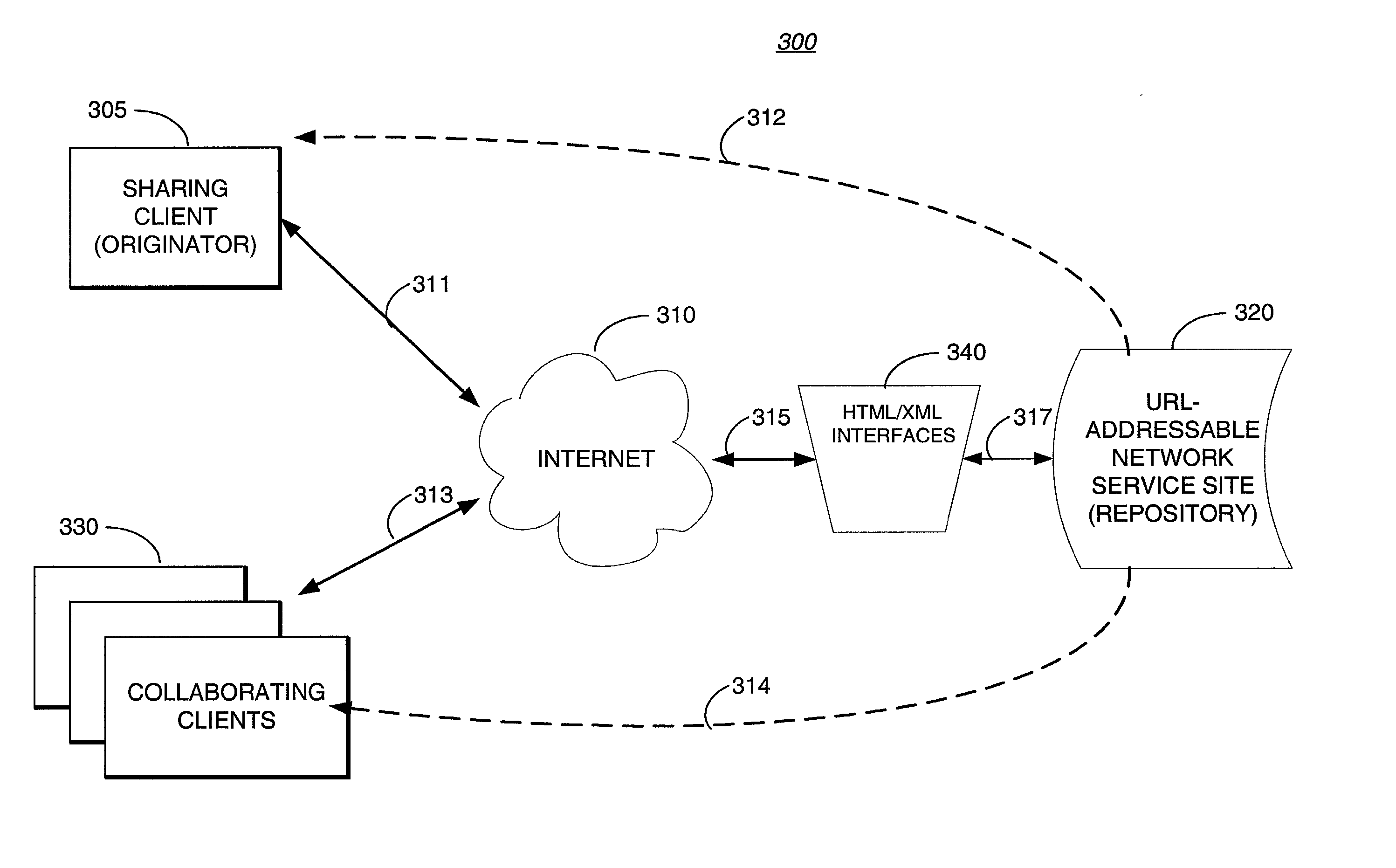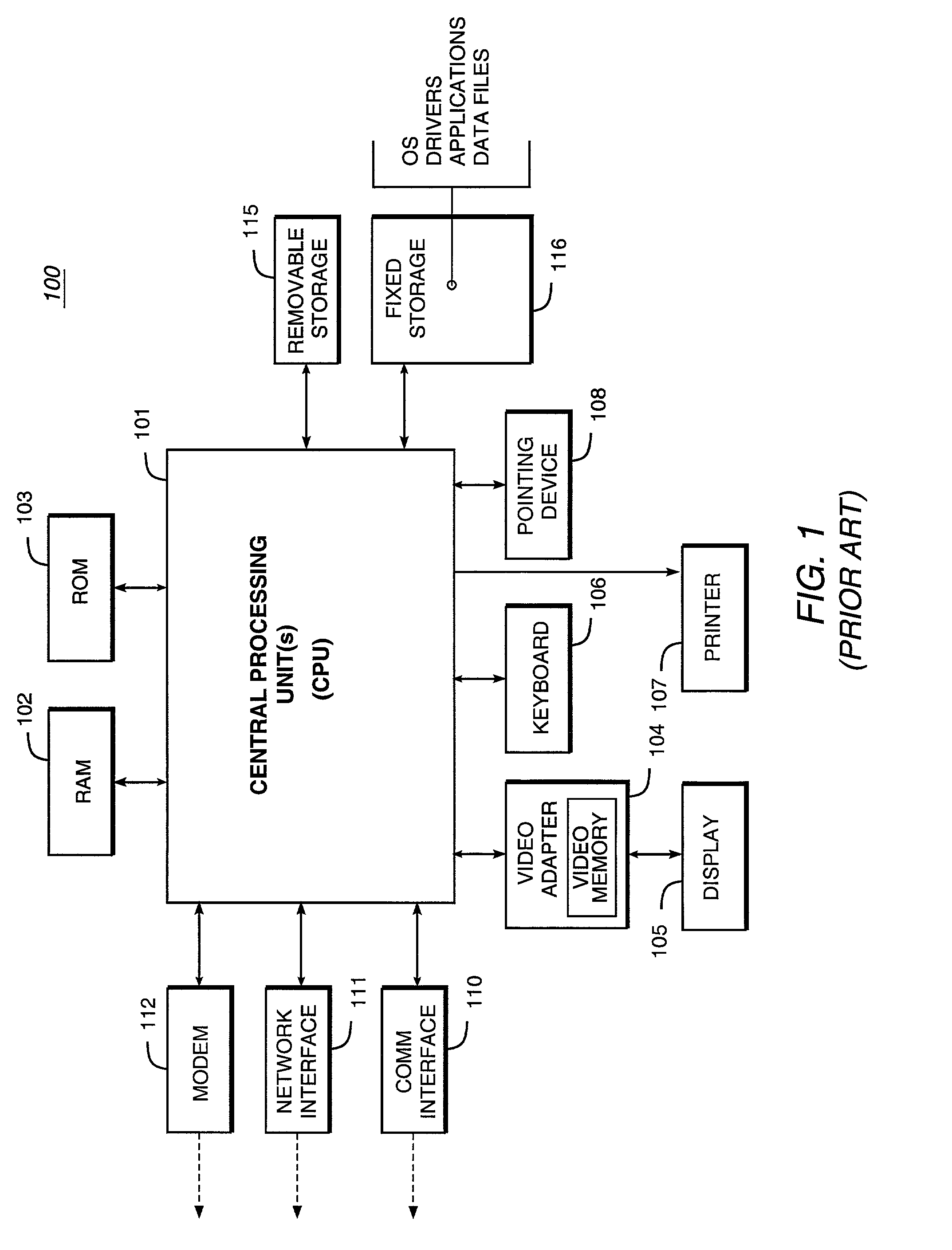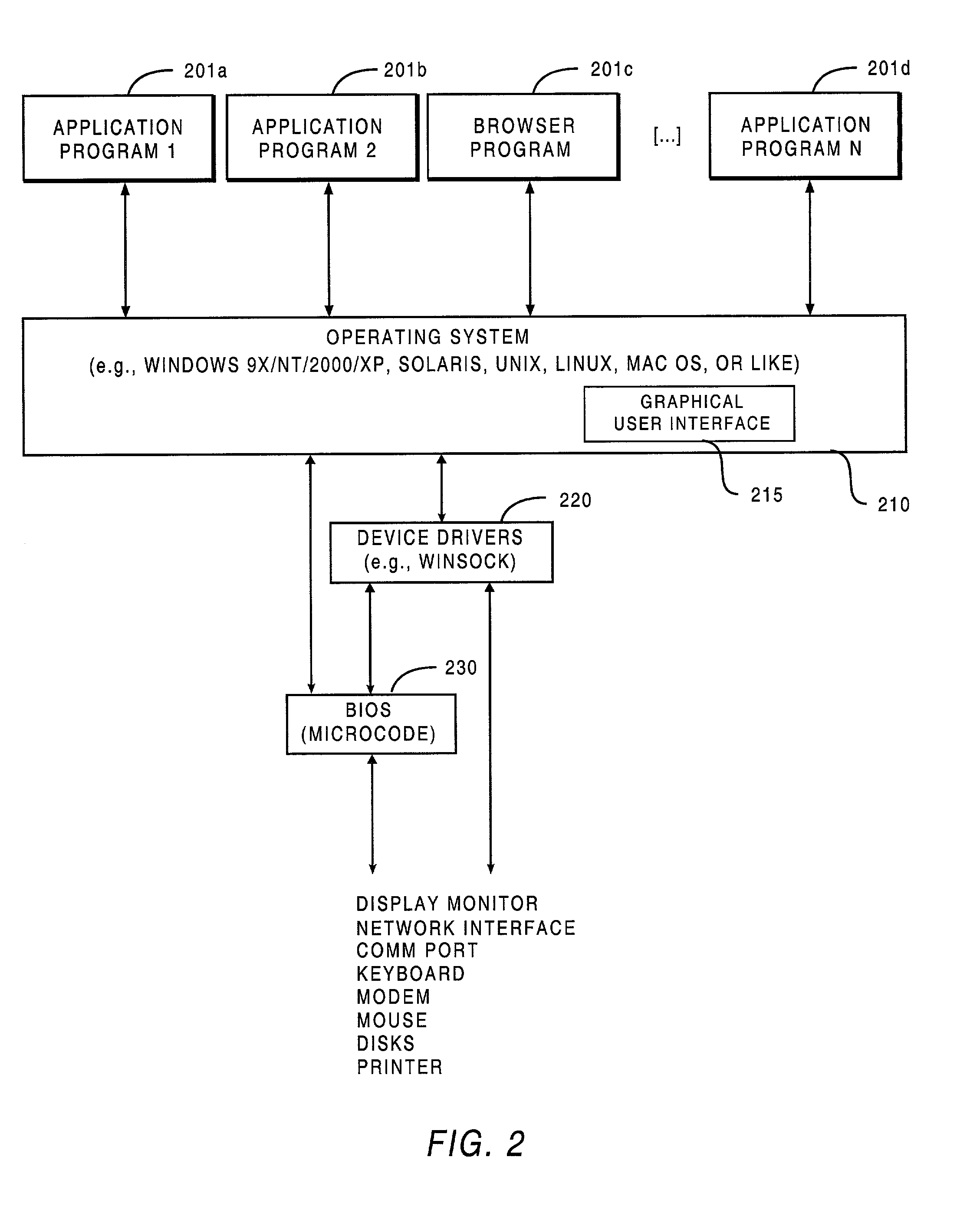Methodology for enabling multi-party collaboration across a data network
a data network and multi-party technology, applied in the field of information processing, can solve the problems of not allowing users to utilize the collaboration environment, unable to provide a platform-neutral, two-way-messaging enabled mechanism for collaboration, and creation of multiple copies of documents or objects
- Summary
- Abstract
- Description
- Claims
- Application Information
AI Technical Summary
Problems solved by technology
Method used
Image
Examples
Embodiment Construction
[0045] The following description will focus on the presently-preferred embodiment of the present invention, which is implemented in a desktop application operating in an Internet-connected environment running under a desktop operating system, such as Microsoft.RTM. Windows running on an IBM-compatible PC. The present invention, however, is not limited to any one particular application or any particular environment. Instead, those skilled in the art will find that the system and methods of the present invention may be advantageously embodied on a variety of different platforms, including Macintosh, Linux, BeOS, Solaris, UNIX, NextStep, FreeBDS, and the like. Therefore, the description of the exemplary embodiments that follows is for purposes of illustration and not limitation.
[0046] I. Computer-based Implementation
[0047] A. Basic System Hardware (e.g., for Desktop and Server Computers)
[0048] The present invention may be implemented on a conventional or general-purpose computer system...
PUM
 Login to View More
Login to View More Abstract
Description
Claims
Application Information
 Login to View More
Login to View More - R&D
- Intellectual Property
- Life Sciences
- Materials
- Tech Scout
- Unparalleled Data Quality
- Higher Quality Content
- 60% Fewer Hallucinations
Browse by: Latest US Patents, China's latest patents, Technical Efficacy Thesaurus, Application Domain, Technology Topic, Popular Technical Reports.
© 2025 PatSnap. All rights reserved.Legal|Privacy policy|Modern Slavery Act Transparency Statement|Sitemap|About US| Contact US: help@patsnap.com



